Yukon Photon XT 4.6x42s Digital Night Vision riflescope
What a mad four weeks we've had, with no immediate let-up in sight. Christmas eh?
Evaluating products
Before we add a new product to our line, we test and evaluate samples, to ensure that it meets cost and performance expectations. Our next step is sending samples for third party evaluation. We've got guys (including our very own VC) testing hunting products, then if everyone's got a woody, we invest in stock.
This review is for the Yukon Photon XT 4.6x42S night vision scope. We sold our first two shipments before they hit the shores, and the next has just arrived in time for Christmas, yeah!
This is a quick overview, then if you need more details about the product, you can read my full initial evaluation below.
Briefly
In nutshell, the Yukon Photon XT 4.6x42S has the following features:
1: It is easy to mount due to having a 30mm body tube
2: Produces a clear image
3: Is a true night scope because the sensor does not render a colour image, and is optimized for use in the near infrared spectrum
4: Enables the shooter to take pigs and deer to 150m (S model), 200m (L model) or 250 meters (S or L models when fitted with a Pulsar L-915s laser IR 'stealth' illuminator
5: Suitable for heavy recoiling calibres up to 4250ft/lbs
6: It is very easy to use, with only two controls.
I've actually been bollocked by the missus for sneaking three out of stock for my .22 Brno, SKS, and Baikal MP 161K, she then caught me in the process of fitting a fourth to my .308. We have dealers waiting to evaluate these themselves, so I guess she has a point.
I really like this scope, and can't wait to get into some pigs with it. I don't really get the time to hunt anymore, I just shoot animals to evaluate products
Here is a quick video that I took a few weeks ago:
https://vimeo.com/109103752
This was taken in starlight conditions, and I had the IR turned right down so that it illuminated only to around 80 metres. This helps me to judge range.
Distance performance of the Yukon Photon XT 4.6x42L
I have also tested the L version for distance performance. The following videos were also taken in starlight conditions. These images are single frame video captures, so the actual image is quite a bit better than this.
This is taken in starlight with the L model at 150 metres using the in-built IR set to max power, and the gain/brightness set to medium.
This is the same set-up at 200 metres, again using the in-built IR and in starlight.
Distance performance when fitted with a Pulsar L-915s laser IR flashlight
As a comparison, I attached a Pulsar L-915 laser IR 'stealth' flashlight to the Photon XT, which has a 100% covert source. Again, the gain/brightness is set to medium. This video only uses the IR from the L-915s, with the inbuilt IR turned off. These results would be the same with either 'S' or 'L' models.
This is at 200 metres in starlight
This is at 250 metres in starlight
This is at 350 metres in starlight. I would be able to detect them at 400 metres or more.
I actually asked my son to walk across a paddock for me to take these videos, but he told me to "get fucked", which I thought was a bit rude considering that I used to change his nappies (young ones eh?). I guess it was extremely dark, and I forgot to take a long a torch.
Though I haven't tried it yet, I anticipate that fitting a Pulsar L-8082 laser IR flashlight would push the recognition range out to around 400 and detect at 450-500 metres, due to the shorter IR wavelength.
My initial observations about the Yukon Photon XT 4.6x42s
History of the Yukon Photon
The original Yukon Photon had been available exclusively in the UK for around 18 months, which really gave me the arse, truth be told. We fielded so many enquires for this product, but had none to sell. So the product, in my eyes, started from a fairly negative point.
The original Yukon Photon was a digital front-end, mounted on a Yukon Craft 30mm daylight rifle tube. Interesting concept. It had a video out, but because the reticle was behind the sensor, no reticle was visible in the video recording. The reticle was adjusted mechanically by means of normal turret adjustments.
So, when the new Yukon Photon XT was announced, I didn't really take much notice of it. It was only when it appeared on our monthly order form, and PDF manuals were received from my factory rep, that I took the time to get my head back into this product.
Difference between the Yukon Photon and the new Yukon Photon XT
Firstly, the mechanical reticle has now been replaced with a digital reticle. There are now a choice of six selectable reticle designs, with the ability to display each reticle in red, green, or white. Reticles can be changed using a simple menu dial, without altering point-of-impact.
The first thing that I noticed when sighting in the Yukon Photon XT, is that it is a reticle moving system. This has the downside of being off-centre if the scope mount is not in good alignment, but has the huge advantage of maximizing field-of-view and resolution. Let me explain. With a digital riflescope, to maintain the reticle in the centre of the image means sacrificing some field-of-view, and resolution. This is because there has to be an unseen portion of the sensor around the outside of the image that can be moved into view, thus altering the position of the image in relation to the reticle. Having a reticle moving design means that the resolution and field-of-view are maximized. The sensor is a 1/4" CMOS, which is smaller, and less costly than the high performance Sony CCD sensors that are fitted in the Pulsar Digisight and Forward DN55 systems. The old Yukon Photon has a smaller field of view than the new Yukon Photon XT.
A soft rubber eyecup is now featured, which in my opinion, and experience in using the Pulsar Forward DFA75/DN55 front attachment, is essential. This shields the face from any light spill that may spook animals.
The video-out port is in the same place, but the external power source has been removed. This irked me a little, but as it happens, it really is not a problem, as you will read later.
My first impressions were good. In daylight, the unit produced a very nice image, with good contrast. The Yukon Photon XT has only two controls.
There is an ON/OFF button that doubles-up as the IR illuminator controller. One very pleasing addition is a three power IR output, which now seems to be the norm with new Yukon and Pulsar digital night vision units. To turn the unit on, press the 'On' button once. Pressing it again turns on the IR to its lowest power; press again for medium power; press again for maximum power. One further press turns the IR off. To turn the sight off, press and hold the button for one second. Nice and easy.
The second control is the brightness and menu dial. Turning this dial controls brightness. Press the button for one second activates the menu. The menu consists of three items, reticle choice, reticle colour, and zero adjustment. I found this really easy to use, especially in the dark.
The Yukon Photon XT is available with two IR illuminator types, the 'S' version, which has a 840nm IR LED illuminator, and the 'L' version has a 808nm eyesafe laser IR illuminator.
The 'S' model is ideal for shooting deer and pigs at 150m, and is especially suitable for shooting small game and pests with a .22LR or air rifle, when range is not the main requirement. With the Photon XT S, I could just make out my son and his black dog standing in from of a treelike at 150m with the IR set to medium. When I set the IR to high, they were both clearly visible. This test was undertaken in starlight.
The Yukon Photon 'L' model has a longer range. I could see my son and his dog at 300m, and certainly clear enough to take a shot at 200m.
The Yukon Photon XT has an accessory Weaver rail fitted to the body, enabling the use of LED IR illuminator with the 'L' version at closer ranges, and the use of a Pulsar Laser illuminator on the 'S' model at longer ranges. In a nutshell, I use the 'S' version on my .22LR, and plan to use the 'L' version on my .308.
The 1/4" CMOS sensor has very good IR sensitivity, making it suitable for use with 'stealth' illuminators, such as the Pulsar 950 LED flashlight, and the Pulsar L-915 flashlight. These have a 100% covert source that cannot be seen by us mammalian types (deer, pigs, and rabbits included). One thing that I did notice, was that the unit flashed in daylight, due to overloading. This is easily rectified by closing the cover, which has a pinhole. This produced a perfect image even in bright sunlight. The CMOS sensor only renders a black and white image, which producers better night performance than colour sensors, especially in the near infrared spectrum. This is smart because the Yukon Photon XT is primarily marketed as a night scope.
The Yukon photon is rated as having a system resolution of 38 lpp/mm. With a magnification of 4.5x, theYukon photon easily displayed a 4" circle at 200m. The Pulsar LRF N870 digital night vision scope has a system resolution of 55 lpp/mm in comparison. I personally like a lower magnification for most night shooting because field-of-view is, in my opinion, more important than magnification, when shooting on-the-move.
The unit is powered by two AA batteries, that are very easily replaced. I measured the discharge time with 3000mAh rechargeable batteries, at 96 minutes with the unit set at a brightness level of 6, which is the setting that I found the most comfortable, but without the IR illuminator. I will be testing this as soon as I find the time. 10 minutes before discharge, the battery indicator turned red. This gives ample time to replace batteries. I must say, the 96 minute discharge time suppressed me, as I was expecting it to be a lot less.
So far so good. But what will it be like to actually use on a rifle. By this time I was impressed with the scope, but looking at my son and his dog, whilst hand holding the scope isn't a true test of its function.
I normally begin my field testing of new riflescopes on one of my .22LR rifles, on the local rabbit population. This enables me to get used to a scope before I venture out after bigger beasties. The Yukon Photon XT is rated for a recoil energy produced by rifles generating 6000 joules, or 4250 ft/lbs.
I chose to fit the Yukon Photon XT on to my .22LR BRNO model 2. I have tried other night scopes on this rifle, and found that the comb was a little too low. The Photon XT fitted this rifle perfectly, because it has the dimensions of a daylight scope, and is very light. This was an extra plus, because I adore this rifle, which itself merits a bit of a story (at a later date)
Doing the biz
Sighting-in the Yukon Photon XT was really easy, and I was soon printing groups around 1 1/2" at 50m. With a day scope, I can normally hold around an 1" - 1 1/4". So far, so good. I was impressed how clear the 4" targets were at 100m, and the fact that I could clearly see the 4" targets at 200m. This is in daylight. You can clearly see these targets in the video that I produced, but bear in mind that the video is not as clear as looking through the scope.
The next step was to venture out into the darkness. I had a phone call from a local lifestyle blocker, who had a few rabbits that needed dispatching. I chose to use a Pulsar Quantum HD38s thermal imager as a spotter because it was my first time shooting this property, and this would give me an accurate indication of his rabbit problem, as well as ensure that I knew the whereabouts of stock and buildings. I only spotted three rabbits, all of which I killed with one shot, but the rats….
I have not been out with the Yukon Photon XT since because I am busy evaluating the new and totally redesigned Pulsar LRF N870, with in-built laser range finder, as well as using the quite evening time to catch-up with work.
To summarize, I am very impressed with this unit. At $899 for the 'S' model, and $999 for the 'L' model, it is an excellent option for hunting and pest control.
More to come........
Welcome guest, is this your first visit? Create Account now to join.
Welcome to the NZ Hunting and Shooting Forums.
Search Forums
User Tag List
+ Reply to Thread
Results 1 to 12 of 12
-
07-12-2014, 12:29 AM #1Member

- Join Date
- Mar 2012
- Location
- Nationwide and South Pacific
- Posts
- 264
Yukon Photon XT 4.6x42S night vision rifle scope
-
-
07-12-2014, 01:18 AM #2Member

- Join Date
- Mar 2012
- Location
- Nationwide and South Pacific
- Posts
- 264
Sorry for all the typos

-
07-12-2014, 07:51 AM #3
Nice vid
 "Hunting and fishing" fucking over licenced firearms owners since ages ago.
"Hunting and fishing" fucking over licenced firearms owners since ages ago.
308Win One chambering to rule them all.
-
07-12-2014, 01:18 PM #4
-
08-12-2014, 01:45 AM #5Member

- Join Date
- Mar 2012
- Location
- Nationwide and South Pacific
- Posts
- 264
Got a few in stock now. 10% discount for forum members. Email Christine, sales@acad.co.nz , and she will send you an invoice. Are you interested in the L or S model? You can ring me 03 9700 570 or email me ant@acad.co.nz for hands-on advice.
-
15-12-2014, 02:52 PM #6
awesome could be intrested in one of those
 OPCz
OPCz
If in doubt double tap
-
17-12-2014, 09:12 PM #7Member

- Join Date
- Mar 2012
- Location
- Nationwide and South Pacific
- Posts
- 264
-
17-12-2014, 09:15 PM #8Member

- Join Date
- Mar 2012
- Location
- Nationwide and South Pacific
- Posts
- 264
G'day! If you need more info, phone me 03 9700 570, or email me: ant@acad.co.nz

-
17-12-2014, 10:36 PM #9
Thanks Ant for the Info.
KHThe Voice of Reason, Come let us Reason together...
-
17-12-2014, 11:22 PM #10Member

- Join Date
- Mar 2012
- Location
- Nationwide and South Pacific
- Posts
- 264
-
24-10-2015, 09:31 AM #11Member

- Join Date
- Feb 2015
- Location
- Burnham
- Posts
- 58
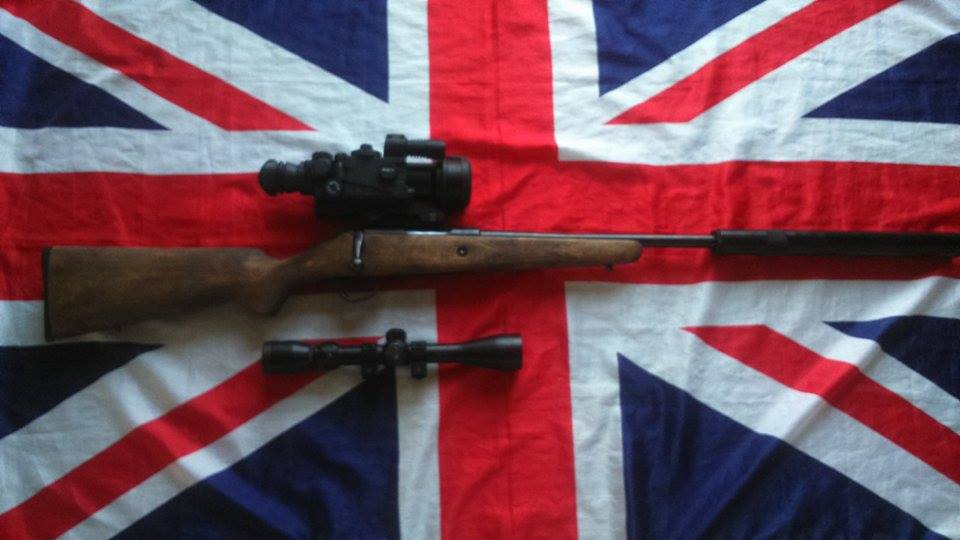 Thanks Ant, I know it is not the photon but works a treat on pests.
Thanks Ant, I know it is not the photon but works a treat on pests.
Matt
-
16-11-2015, 09:35 PM #12Member

- Join Date
- Mar 2012
- Location
- Nationwide and South Pacific
- Posts
- 264
I've put a lot of wee furries to the sword with a Sentinel 2.5x50 fitted on my .22 BRNO Mod5 and Webley .22 PCP.

Similar Threads
-
Night Vision scope
By Wirehunt in forum Firearms, Optics and AccessoriesReplies: 34Last Post: 21-06-2013, 04:54 PM
Tags for this Thread
Welcome to NZ Hunting and Shooting Forums! We see you're new here, or arn't logged in. Create an account, and Login for full access including our FREE BUY and SELL section Register NOW!!





 4Likes
4Likes
 LinkBack URL
LinkBack URL About LinkBacks
About LinkBacks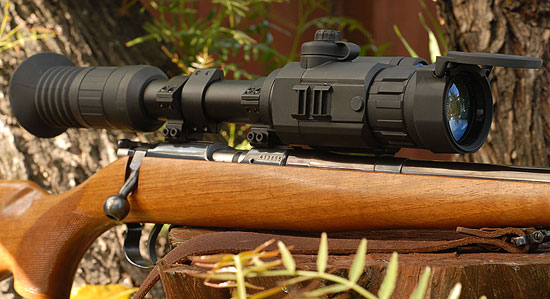
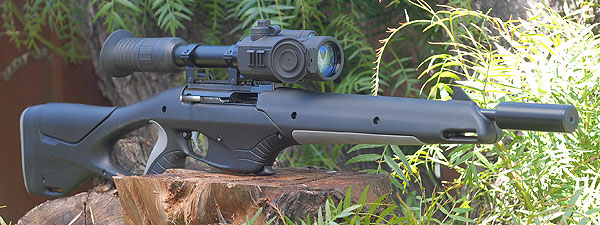
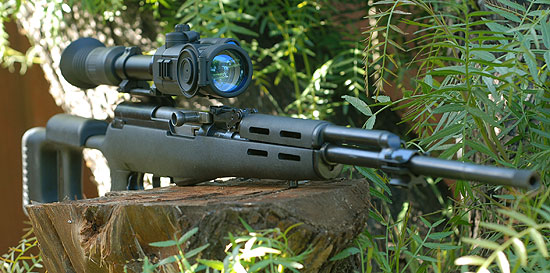

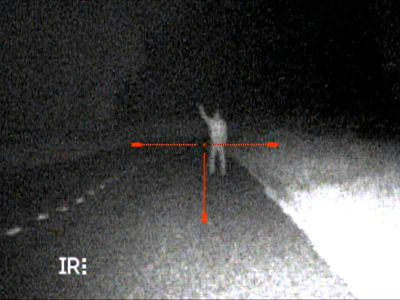
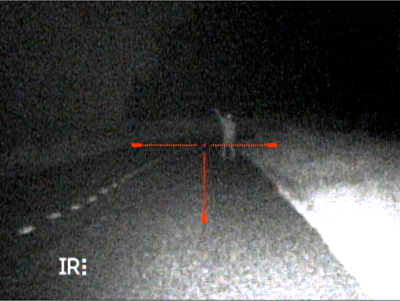
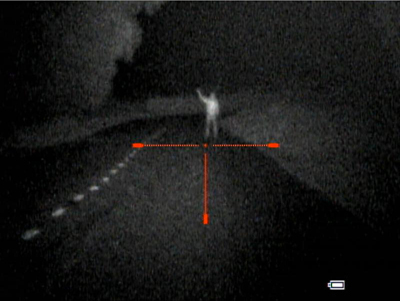
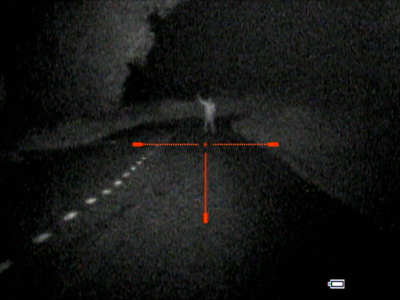
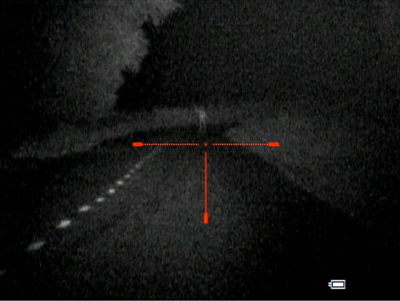




 Reply With Quote
Reply With Quote




Bookmarks